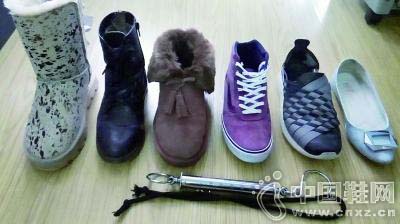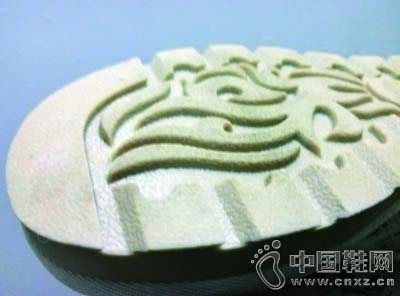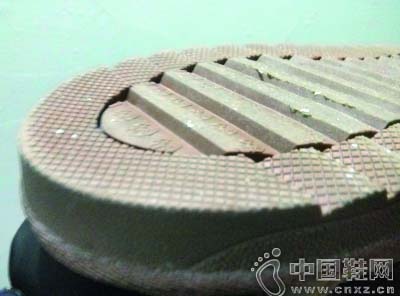[This site - shoes and life] on Sunday, the capital dropped a heavy snowfall, some people worry about: what kind of shoes to go out after the snow does not slip? hot snow boots slip it? This also caused Weibo Net friend's hot discussion. The "Legal Evening News" (French WeChat ID: fzwb_52165216) reporter conducted experiments on different types of shoes such as snow boots, boots, and sports shoes yesterday and calculated the coefficient of static friction, and concluded that the deeper the lines of rubber soles, lines The more complex, the greater the relative friction, that is, the more slippery this shoe is.

From left to right are No. 1 snow boots, ladies' Martin boots, No. 2 snow boots, sneakers, sneakers and ladies' single shoes.
Following the heavy snowfall that hit Beijing on Sunday, there will be a light snow in the southwest of the capital today. Snowfall makes many netizens worried that in addition to wearing thick down jackets, what shoes should be worn under the feet to prevent slipping? “Snow will not walk. This step by step, many shoes do not slip.†Some netizens said.
The reporter observed in the outdoors that most of the women chose to wear snow boots and boots in winter, while men chose sports shoes, boots and sneakers. "Snow boots should also be quite non-slip, but sometimes they feel clumsy," said the citizen, Ms. Hong.
Legal Evening News (French WeChat ID: fzwb_52165216) The reporter searched for "Snow Boots" and "Slippery" on Taobao. Looking at some product introductions, he found that most of the shoes were rubber soles, and the style of the soles was different. Introduced "increase the groove shading to improve the anti-skid coefficient", and some even inlaid rubber nails.
Are these non-slip snow boots really slippery? What about other types of shoes that are not slippery? The reporter conducted experiments.
Anti-skid prevention, mainly to see how the friction of the soles. The experiment mainly tests the coefficient of static friction of soles to determine the performance of anti-skid shoes. The experiment simulates snow on a smooth wooden floor and tests the static friction coefficient of different shoes in the same environment.
Tensile force gauge, ruler, six different shoes, shoes are two different styles of snow boots, high-top shoes, sports shoes, women's Martin boots, single leather shoes.
1. Place a bottle of water in the shoe and measure the weight of the six shoes using a dynamometer, ie the downward pressure (N)
2. Place six shoes on a smooth wooden floor and pull the shoe horizontally with a pull meter. Record the pull count at the moment the shoe is pulled. This value is converted to the maximum static friction force (F). Repeat 3 times and average
3. Calculate the coefficient of static friction. That is, the static friction coefficient μ = F (static friction force) / N (vertical pressure, that is, the weight produced by the mass)
4. Test sole sole thickness and texture depth

The snowshoes of No. 1 snow boots are thick, with a complex pattern and distinct ravines.

No.2 snow boots shoes with simple shading, relatively shallow experimental results (unit: N)
Shoes pressure static friction coefficient of static friction
No. 1 snow boots 10 3 0.3
No. 2 snow boots 10 2 0.2
Martin boots 10 1.5 0.15
Shoes 9 1.5 0.167
Sports shoes 8 1 0.125
Single leather shoes 8 0.5 0.0625
Sole thickness and texture depth
Shoes sole thickness line depth observation results
No.1 Snow Boots 4cm 0.5cm Softer Sole
No. 2 snow boots 3cm 0.3cm slightly lighter than No. 1 texture, soft soles
Martin boots 2cm 0.4cm sole with heel, hard sole
Shoes 2cm 0.2cm Sole is soft, with dense soles
Sneakers 2cm 0.2cm Softer, thicker lines, less dense
Single leather shoes <1cm without soles, but the lines have been flattened
Conclusion The maximum static friction coefficient of snow boots
Among the 6 shoes, No. 1 snow boots have the highest coefficient of static friction, that is to say, under the same pressure, the static friction generated is the greatest, that is, the most slip resistant.
Observe the soles of 6 shoes. The sole of No. 1 snow boots is about 4 cm thick. The pattern of the lines is complex and the grooves are also wide, which is obviously different from the fine lines of shoes.
Experience wearing Martin boots slipping easily
The experiment was conducted on a sleek wooden floor. What actually happened to the snow-covered road surface? The reporter wore experimental shoes and tried to walk outdoors on a snow-covered and icy ground. There was no obvious obstacle when walking on No. 1 snow boots.
Afterwards, the reporter replaced Martin's boots and walked on the same section of the road. The soles of the feet appeared slippery. In a place where the snow was hard and frozen, he slid under his feet.
In addition, the reporter found that shoes with thick soles can also prevent snow from infiltrating into the shoes in places where there is a melting of snow, and it is also more conducive to non-slip.
Experts say thick soles deep and complicated and more slippery
With regard to the experimental results and experience, the reporter consulted with teacher Hu Wei of Hunan University’s School of Physics and Microelectronics Science and Technology.
"Generally choose the soft material soles more slippery than the material soles." Hu Wei explained that hard soles are mainly vertical forces, the force of the soft soles will be more easily decomposed, which is more easily decomposed into the soles Before and after the force, it will increase the friction when walking.
Hu Wei told reporters that the friction between objects is affected by the roughness of its surface. When walking on a road surface, the upper and the floor slide on each other, and the easier it is to slide, the easier it is to wrestle. The main factors affecting friction are stress and surface roughness. Stress is the weight of each person's weight. Under the same gravity, the influencing factor is the degree of surface roughness.
"In order to reduce the possibility of slipping, the greater the degree of roughness, the better. Then the surface of the sole has some lines and patterns similar to the gutters, which will have greater friction than the smooth sole." Hu Wei said, when the sole is large The gully is already available, and a few lines are added to the soles of the shoes, which means that the lines are complex, which can increase their friction.
For the thickness of the sole, Hu Wei explained that although it cannot be said that "the thicker the shoe is, the more slippery the sole is," but if the sole is too thin, it cannot form a gutter; the sole has a certain thickness to form a certain gully. Therefore, a certain thickness of the sole also helps to prevent slippage.
More exciting content, welcome to scan the QR code below to pay attention to the official WeChat!

Employers should understand the potential risks and hazards in the workplace and provide appropriate protective equipment and safety FR Coverall,FR Coverall,FR Jackets,FR Shirts,FR Pants.For a safer job environment, having a FR Shirt is essential. FR Shirts adopt a new environment-friendly flame retardant finishing technology. FR Shirts use the most advanced flame retardant chemicals. To achieve the best protection performance, and also to achieve the most strict environmental standards. FR Shirts is environmentally friendly and no harm to body,feel comfortable to wear.FR Shirts has functional Anti-arc flash,Anti-acid and Alkali ,Anti-static ,anti-UV ,Anti-Mosquito FR shirts.which also have the advantage of blast impact, flame retardant, heat insulation, breathable, devote to offer workers best services.
Fr Shirts,Safety Shirts,Wholesale Safety Shirts,Wholesale Fire Retardant Shirts
Xinxiang Xinke Protective Technology Co, Ltd. , https://www.coverallsuits.com